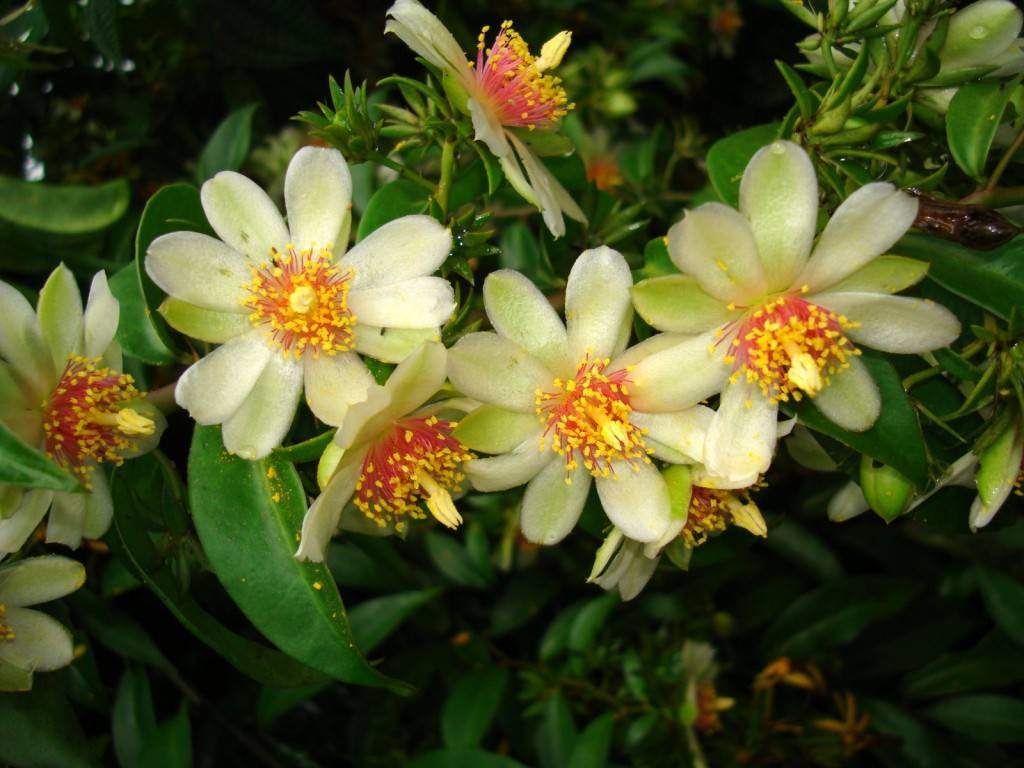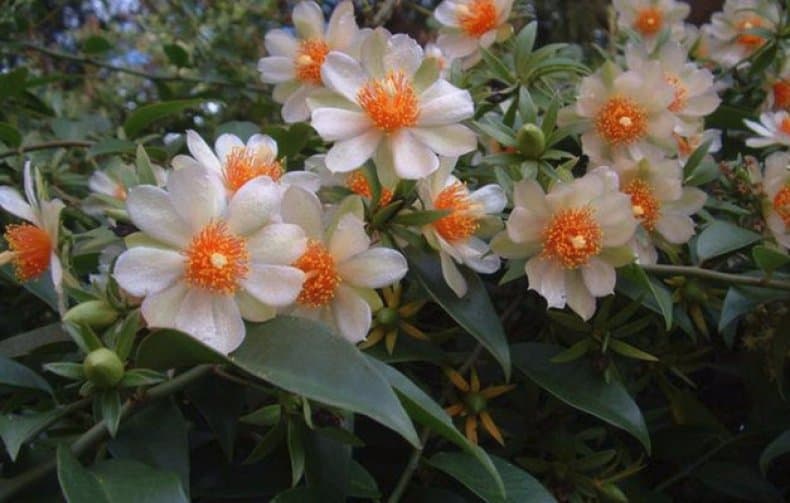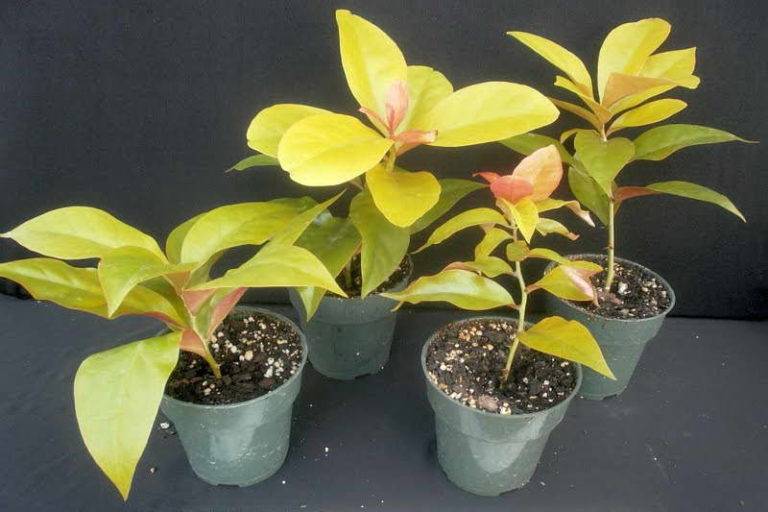Pereskia flower - home care
Content:
The pereskia flower is commonly grown for its ornamental leaves. This is an unusual and undemanding plant, suitable for any interior. However, there are some nuances in its planting and reproduction.
What does pereskia look like?
Pereskia belongs to the Cactaceae family. This is the oldest genus of cactus, which appeared in Central and South America. The ancestors of modern pereskii had foliage, which after some time transformed into thorns. The hot and dry climate contributed to this. However, the culture was unable to completely get rid of the leaves. This is what makes the pereskia different from the rest of the cacti.
Pereskii leaves are purple or green in color. Areoles are present in the leaf sinuses. Separate long spines or their bundles are formed from them. They help the plant attach to tree trunks. The stem of the pereskii is erect. Its height reaches 10 m. Over time, it becomes lignified.
Pereskia has about 20 varieties. Some of them can grow quite large and produce edible fruits. Compact specimens are suitable for indoor or greenhouse cultivation. The most popular varieties:
- pereskia spiny. It is a spreading shrub 2.5 m high with stems covered with small brown spines. Home care for pereskia prickly is no different from the classic pereskia. The length of hard, bright green oval leaves can be up to 10 cm. Large flowers are painted yellow with a shade of pink;
- Pereski Godseff. Thin stems of the plant are covered with small black spines, collected in bunches. The length of oval leaves with a pointed edge is 6 cm. The front side of the leaf is colored light green, and the back is pink. Small flowers of Godsefa have a snow-white or cream shade and resemble a wild rose. The cactus grows up to 2 m. Godseffiana has a lemon scent;
- Pereski Weber. A cactus plant that grows up to 3 m in height. It has abundant and long flowering. Small leaves attach to the flower without cuttings. Flowers of medium size are white. The shrub is suitable for making bonsai.
Pereskia: home care
For stable growth and development, the plant must be looked after. Compliance with the recommendations will help create a favorable climate for him.
Temperature
The optimum temperature for a cactus during growth is from 22 ° C to 23 ° C. It is necessary to prevent the accumulation of stagnant air in the room. Regular airing will help to cope with this. In the fall, the cactus is transferred to the coolest place. Temperature reduction up to 15 ° C is allowed. In winter, the flower hibernates. Then the temperature can vary from 12 ° C to 16 ° C.
Lighting
This light-demanding plant prefers a south-facing window sill. It is better to shade the bush to avoid burns. Lighting should be diffused. In the summer, the peresky flower can be taken outside. During the onset of cold weather, you will have to turn on artificial lighting.
Humidity
The plant may have enough air with a low moisture content. However, it is recommended to regularly spray the flower with soft water. You can also use a wet expanded clay pallet.
Watering
In the spring and summer periods, watering should be carried out as the soil dries. With the onset of autumn, the bush needs to be watered much less often. For irrigation, use soft, settled water. In winter, the frequency of procedures is halved.
Top dressing
It is recommended to fertilize the plant in the spring and summer seasons once every 2 weeks. We need fertilizers for cactus plants. Typically, only one-half of the dose indicated on the package is used. When choosing top dressing, you need to remember that high nitrogen content will harm the flower. This can lead to the fact that the root system will rot.
Pruning
Pruning is recommended before active growth begins. It is necessary to give the flower a neat crown. A sterile pruner is used for trimming. It is forbidden to cut the plant during hibernation, otherwise the shoots will become weakened and elongated.
Priming
Pereskia leafy cactus requires loose, fertile soil with low acidity, containing useful substances. For self-preparation of the soil, take leafy earth, sod and clay, sand and humus in a ratio of 2: 2: 1: 2.
When and how it blooms
When and how does Godseff pereskia or any other species bloom? The plant blooms in summer and autumn. In the process of flowering, individual buds or racemose inflorescences with a citrus aroma are formed. The buds have well-defined tubes, which are characteristic of cactus flowers. The oval petals are similar to those of a rose hip.
How pereskia reproduces
For cultivation of a flower, cuttings and the seed method are used. In the first case, lignified shoots are needed, with 1-2 nodes. They are harvested in the spring or summer season. Step-by-step instruction:
- Carefully cut the cuttings with a pointed knife.
- Immerse them in a moist perlite or peat composition.
- Cover the cut parts of the plant with a polyethylene bag and keep them at a temperature between 25 ° C and 28 ° C for 3 weeks.
- Plant rooted plants in pots.
Planting seeds in a container takes place in the spring. The temperature must be kept within the range of 20-22 ° C. The first shoots will appear after 2-3 weeks.
Transfer
Transplanting a young cactus should be carried out for the first 2-3 years in a large container with drainage at the bottom. Adults will need a transplant only after the roots have completely filled the container. In the prepared soil for cacti, they are planted with the transfer method.
Diseases and pests
Deciduous cactus is susceptible to the following diseases:
- gray rot;
- yellowing of foliage.
Insects that harm the flower are scale insects, spider mites and mealybugs.
Against diseases, the flower is treated with fungicides, and insects - with insecticides.
Pereskia is a cactus that is interesting to many flower growers. He will feel comfortable in a cottage or apartment with a large balcony. The main thing is to provide him with decent care.



















